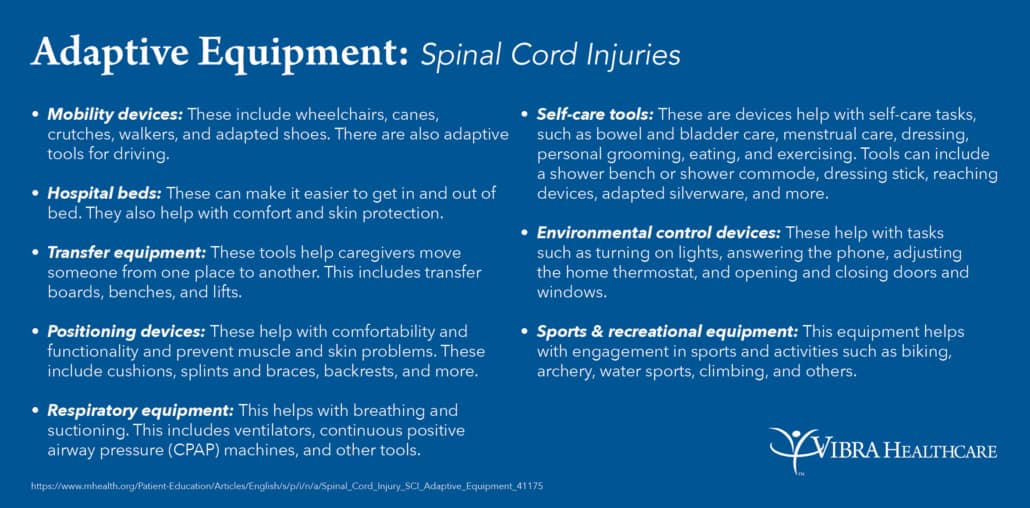Planning for Life with a Spinal Cord Injury
A spinal cord injury typically results from a trauma, like a car accident, bad fall, or sports injury. This damage causes temporary and sometimes permanent loss of mobility and/or feeling. According to the United Spinal Association, there are approximately 17,700 new spinal cord injuries in the United States each year.
What does life look like for someone with a spinal cord injury after the acute recovery and rehabilitation phase? Coming home with this injury shouldn’t prevent someone from living a full and rewarding life. But there are lifelong changes to address and plan for in an organized fashion.
Post Recovery & Rehabilitation Care
Someone with an injury at the neck or in the cervical spine will need various physician involvement throughout their life. Visits with a pulmonologist, nephrologist, and a physical or occupational therapist should occur on an annual basis.
A pulmonologist will address medications or potential issues that can arise in the lungs. Physical and occupational therapists will evaluate changes in functional needs. A nephrologist will address potential kidney problems.
Functional Changes
One of the most significant functional changes that can occur as someone ages with a spinal cord injury is their need for different types of wheelchairs. Initially, they may be OK using a manual wheelchair. But as they age and wear and tear begins to affect the arms or shoulders, they may have to move into a power wheelchair.
Skin breakdown or a damaged area of skin from loss of blood flow are some of the more serious complications that can occur. It’s important to incorporate daily skincare activities, like pressure relief, skin inspection, and the use of padding or a special mattress.
Adaptive equipment or assistive devices should be updated on a routine basis to maintain maximum independence. Examples of this type of equipment include mobility devices, hospital beds, transfer equipment, and positioning devices.
Seeking Assistance
After rehabilitation, it is important to establish a proper care plan to meet the changing needs of the injury. It is essential to seek help like case managers or someone in a niche field like life care planning. Keeping those doors open will support a successful recovery.





